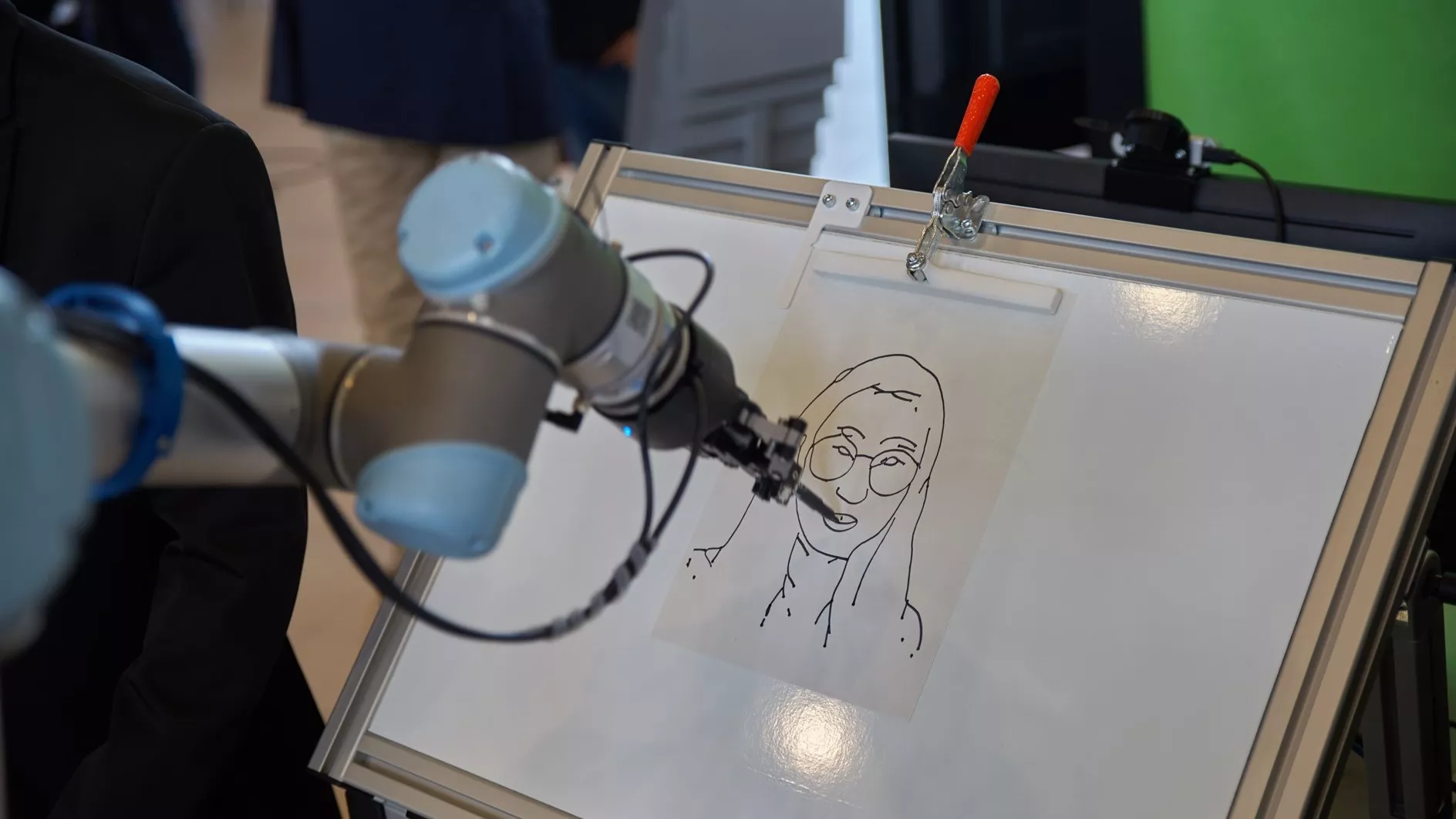The Hungarian Artificial Intelligence Coalition held a professional partner day on June 15, and a public exhibition on June 16. Demonstrations of the Institute for Computer Science and Control (SZTAKI) and other partners of the Artificial Intelligence National Laboratory (MILAB) were on display at building Q at the Budapest University of Technology and Economics.
On June 15, László Palkovics, Minister for Innovation and Technology, visited the partner day of the Artificial Intelligence (AI) Coalition. The minister and the coalition partners were presented the recent developments in the area. In addition to MILAB partners, the Research Center of Vehicle Industry of the University of Győr, the Ministry of Interior, the Budapest University of Technology and Economics, Continental, Ericsson, IBM, T-Systems, the Automotive Research Center (JKK) at Széchenyi István University and partners of the AI Coalition involved in the practical application of artificial intelligence were also among the exhibitors.

SZTAKI also showcased the drawing robot of its Research Laboratory on Engineering & Management Intelligence that had already been presented during the Researcher’s Night virtual event in November 2020. The robot draws portraits by taking a photograph of the model that can be vectorized, 'translating' visual information into interpretable lines. The robot draws the image of the model by following these vector lines with a pen in its grabber.
A self-driving car developed by the Systems and Control Lab (SCL) of SZTAKI in cooperation with the University of Győr Research Center of Vehicle Industry was also on show. The autonomous vehicle built into a Nissan Leaf is equipped with various sensors, which can help the car to follow its route, including in traffic. Those interested in autonomous vehicles had the chance to see some on the move: autonomous drones that are capable of agile maneuvering and a model car taking part in a virtual traffic. The latter, for example, took the obstacles of a roundabout as if it were manoeuvering in real life.
Another important development of SZTAKI, the contactless infant diagnostic device was also exhibited, which is used to ensure that the vital signs of infants in an incubator can be monitored in hospitals without the need to apply electrodes to their sensitive skin surface. The device developed by the Machine Perception Research Laboratory in partnership with Semmelweis University and Medicor is based on cameras without the need for direct contact with electrodes on the babies’ skin. This solution may be applied in home-care as well.
Flexible wings developed by the Systems and Control Lab of SZTAKI were also shown at the event affixed to a small aircraft model. Researchers of the institute have been developing a solution that may lead us to a more sustainable era of aviation by lowering fuel consumption and enlarging weight capacities of any aircraft as a result. The wings are tested on a machine with a wingspan of seven meters, which is operated in Munich for testing purposes. The exhibition model gave visitors an insight into the project.
The exhibited research fields of SZTAKI are in line with the development goals of the Hungarian Medical Cluster. Based upon this – and to reinforce their partnership – during the exhibition a cluster entry declaration was signed by Professor László Monostori, Director of SZTAKI and Dr. Arnold Steiner, Chairman of MEDICOR Elektronika, and Chairman and CEO of MEDICOR Zrt.